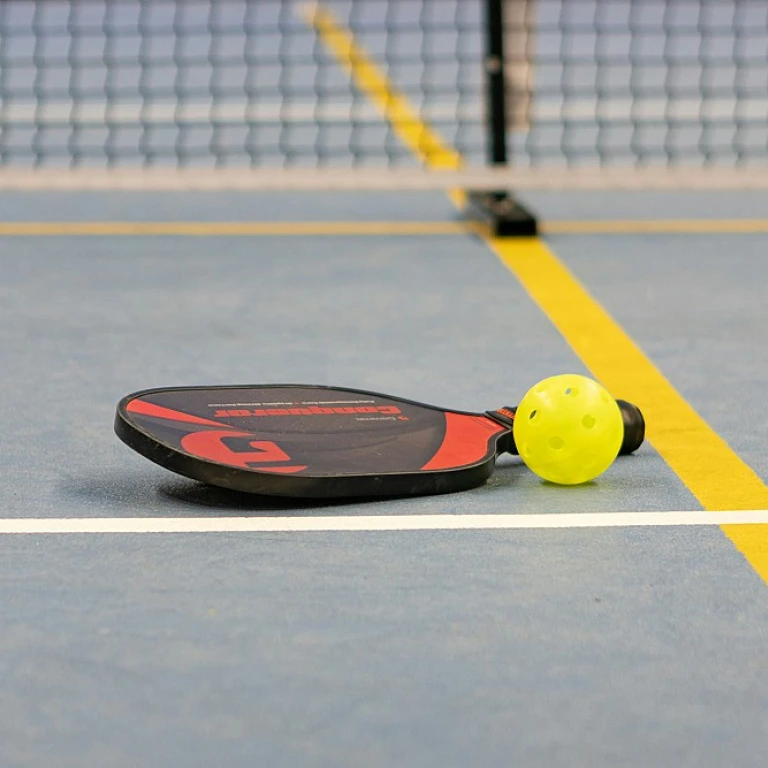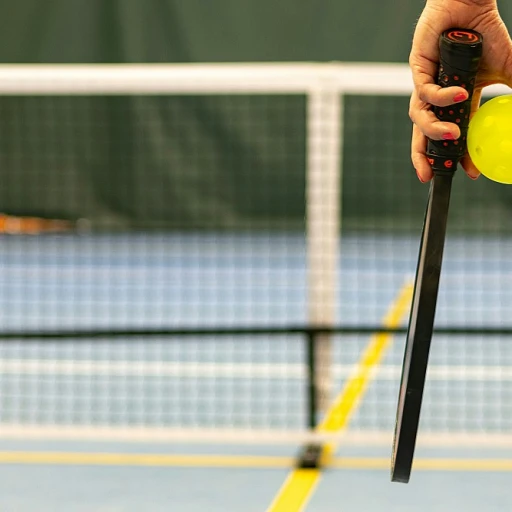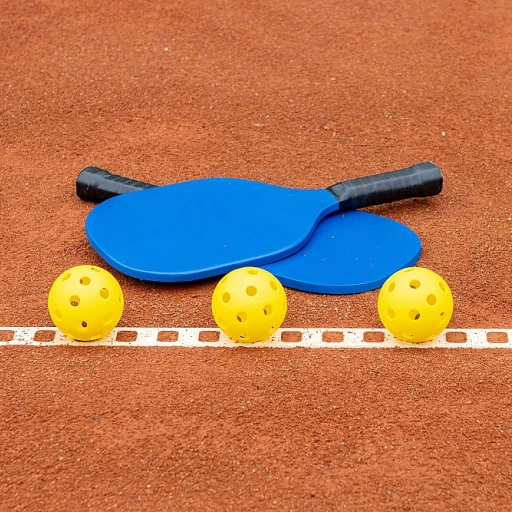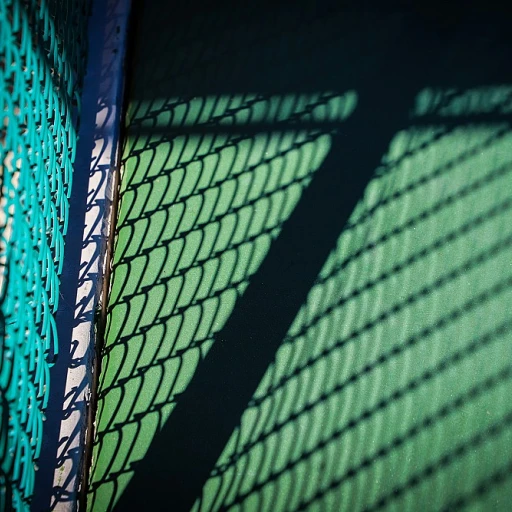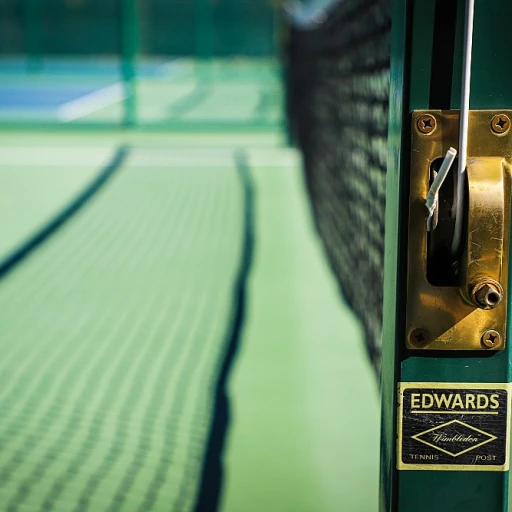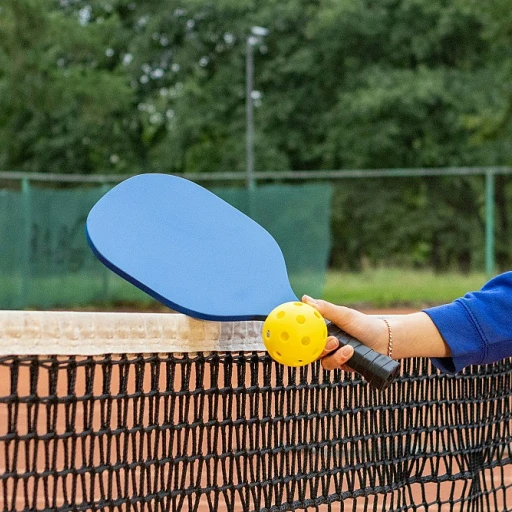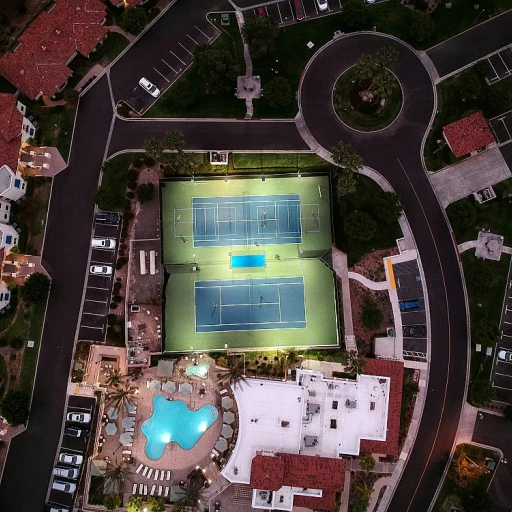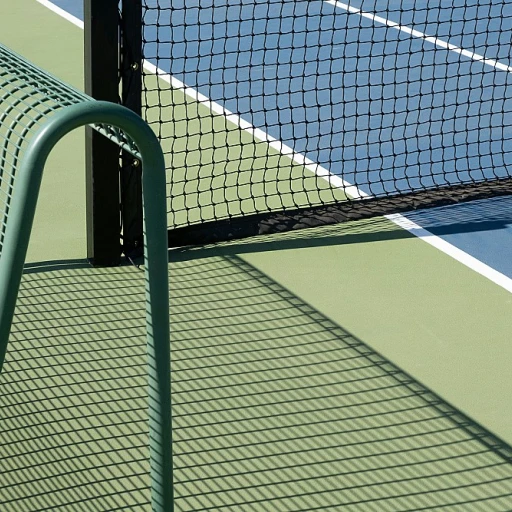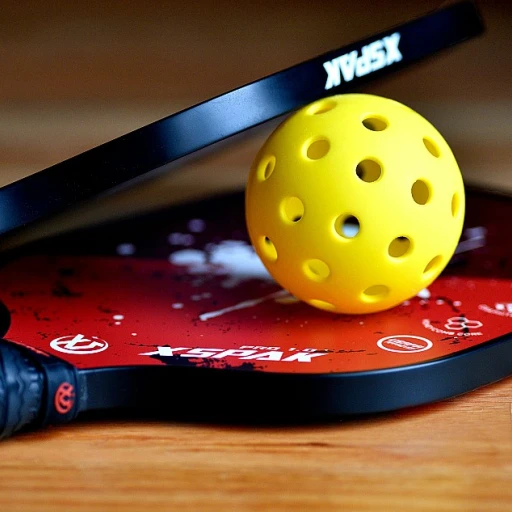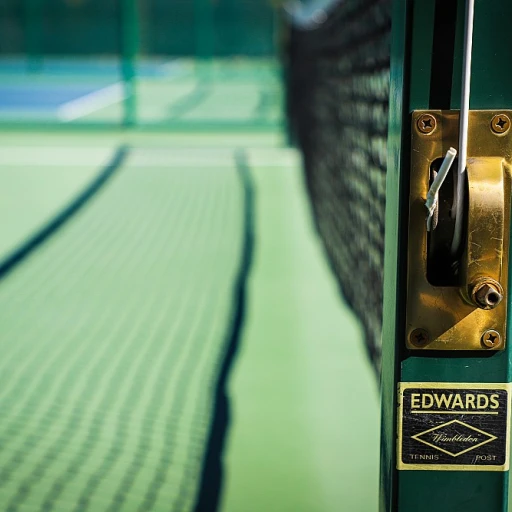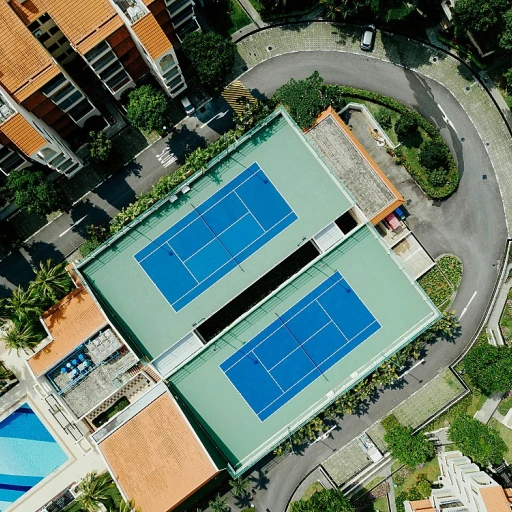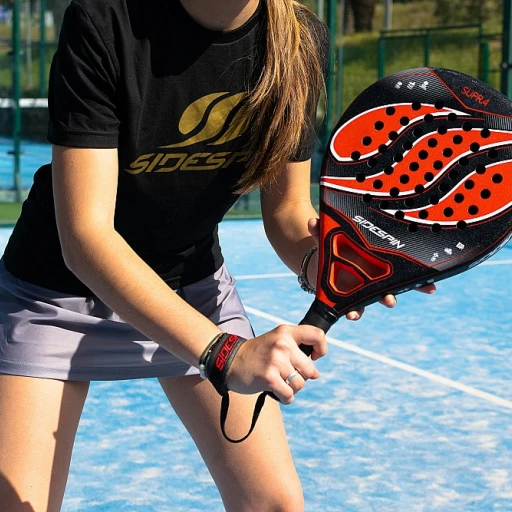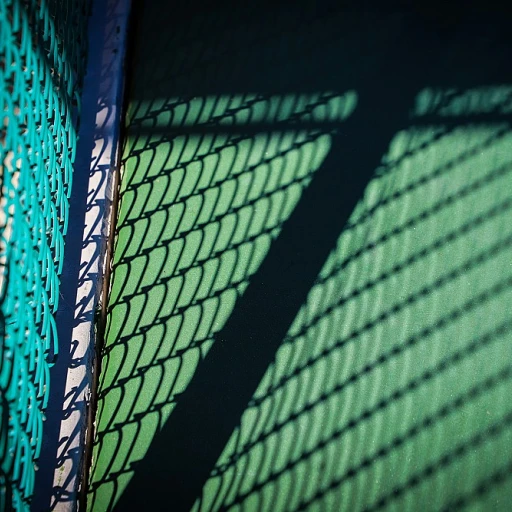
The Importance of Proper Court Paint
Why Proper Court Paint Matters
Painting a pickleball court, whether it's on concrete asphalt or other surfaces, requires meticulous attention to the paint product used. Employing the right court paint is crucial as it significantly impacts the playability, durability, and aesthetics of your court. Utilizing high quality paint ensures a smooth surface that provides an excellent {"alpha grip. This can enhance player movement and reduce the risks of injuries. Moreover, using the correct type of paint will help in weatherproofing your court, protecting it against environmental elements such as rain, UV rays, and severe temperatures. This is especially relevant for outdoor courts, where the conditions can cause the surface to degrade over time. Investing in a durable acrylic resurfacer can offer an added layer of protection, preserving the court’s quality and color for longer periods. The color of the paint is another essential factor, not just from an aesthetic perspective but also for gameplay. Bright, vivid colors help in demarcating the court lines, which should be consistently visible to players. Choosing standard colors for the lines such as white or yellow ensures they stand out against the court surface. The use of stencils during the application process allows for precise lines, ensuring adherence to regulation standards. Proper preparation and application of the court surface also involve the right amount of product usage, typically measured in gallon pails, to cover the desired area. For an official-sized pickleball court, this {"court will require an ample amount of paint to ensure uniform coverage. For further insights, you may explore this detailed guide on {"the size of a pickleball court(https://www.pickleball-today.com/blog/what-is-the-size-of-a-pickleball-court) to better comprehend the requirements. The significance of using suitable paint extends to situations where the court shares space with a tennis court or a parking lot. Different scenarios call for specific types of paint and application techniques that accommodate multiple activities without compromising the court's integrity.Types of Paint Suitable for Pickleball Courts
Choosing the Right Paint for Your Pickleball Court
When it comes to painting pickleball courts, selecting the appropriate type of paint is crucial not only for aesthetics but also for performance and longevity. The primary surface of these courts, whether concrete or asphalt, dictates the type of paint that should be used. There are a few factors to consider when deciding on the right product for your court.
- Acrylic Paints: High quality acrylics are commonly used on pickleball and tennis court surfaces due to their resilience and ease of application. They provide vibrant color options and an optimal grip, ensuring both visual appeal and player safety.
- Slip Resistance: Opt for a paint that offers an alpha grip to reduce slipping, especially important on a recreational court.
- Surface Preparation: Before applying the paint, ensure the court is thoroughly cleaned and dry. Utilizing an acrylic resurfacer can prepare the surface properly, allowing for better paint adherence.
- Application Method: Paint can be applied using stencils to ensure standard inch-perfect lines, providing precision and professional results. Using gallon pails for the paint helps in covering the court efficiently.
- Durability: A grade product will withstand different weather conditions, extending the lifespan of your court paint.
For a more in-depth understanding of pickleball court sizes and adapting your paint choices accordingly, visit our detailed guide. Additionally, customer service from vendors can assist in selecting the best paint that meets recreational or competitive standards.
Whether the court is situated on a parking lot or a designated pickleball court area, opting for the right paint selection is paramount. Proper selection leads to a well-maintained court, essential for providing an enjoyable playing experience.
Preparing the Surface for Painting
Preparing the Court Surface for A Flawless Finish
Painting your pickleball court requires thorough preparation of the surface to ensure long-lasting and vibrant results. Whether the court is made from concrete or asphalt, the first step is paramount for a smooth, even application. A clean and stable surface will enhance the overall durability of the court paint.- Cleaning the Surface: Begin by thoroughly cleaning the court surface to remove debris, dirt, and oils. For concrete or asphalt surfaces, a pressure washer is recommended to effectively eliminate stubborn grime.
- Repairing Damages: Assess any visible imperfections such as cracks, holes, or uneven areas in the surface. Use a high-quality filler or patching product specifically designed for court surfaces, allowing ample time for the material to cure before starting the painting process.
- Etching Concrete: For concrete courts, ensure the surface is etched appropriately. This step is crucial for enhancing the grip of the paint to the surface, preventing peeling and chipping. Use a concrete etching product and follow manufacturer instructions for optimal results.
- Using Acrylic Resurfacer: Before applying court paint, consider using an acrylic resurfacer. This step will provide a consistent base for better color adherence. Mix the resurfacer with water according to the product instructions and evenly apply across the court using a squeegee.
Application Techniques for Optimal Results
Mastering the Art of Applying Paint for Best Results
To achieve a professional look and optimal performance on your pickleball court, the application techniques you use are critical. Here is how you can ensure that your court paint enhances both aesthetics and functionality:- Surface Assessment: Begin with an evaluation of the court's surface, whether it be concrete asphalt or another material. Ensuring it is smooth, clean, and dry is paramount for the paint to adhere properly, avoiding unnecessary peeling and cracking later on.
- Selection of Tools: High-quality tools and products aid in the process. Consider using paint rollers with extension handles and high-grade brushes to cover various surfaces. For large-scale applications, investing in a squeegee may provide a uniform coat over the court's specifics.
- First Layer Precision: Start by applying an acrylic resurfacer, which provides a prime base, creating a uniform surface for the subsequent layers. This base layer is essential for grip and longevity, ensuring that the pickleball court withstands regular use.
- Applying Court Color: The color application is where the style of the court comes into play. Whether painting the entire surface or just parts, ensure that the movement of the roller or brush follows a consistent technique. You might use gallon pails of your chosen acrylic paint, ensuring even coverage and color depth.
- Pro Tips for Lines and Markings: Use stencils to maintain precise lines. The standard width for court lines is 2 inches, and utilizing line marking stencils will ensure straightness and uniformity. Double-check your measurements to stay within the regulations and maintain aesthetic proportion.
- Finishing with Detail: Once the main color layers and lines are dry, apply a high-quality, clear sealant. This topcoat serves to protect the painted surface, enhancing durability against weather and wear. Look for products with superior customer service and support in the United States if you need quotes or assistance during the process.
Maintaining Your Painted Pickleball Court
Keeping Your Court in Pristine Condition
Maintaining your painted pickleball court is crucial in ensuring its longevity and performance. A well-maintained court not only extends the life of the surface but also enhances the playing experience. Here are some essential tips for keeping your court in great shape.- Regular Cleaning: Debris, dirt, and leaves can accumulate on the court surface, affecting traction and ball bounce. Regularly sweep or blow off the court to maintain a clean playing environment. Use a soft-bristled broom or a leaf blower to prevent damage to the paint.
- Inspect for Wear and Tear: Periodically check for any signs of deterioration. Look for cracks in concrete or asphalt surfaces, fading of color, or peeling paint. Address these issues early with proper patching materials or repainting to prevent further damage.
- Manage Water Drainage: Ensure proper drainage around the court to prevent water pooling that can lead to surface damage. Consider installing a drainage system if water accumulation is a recurring issue.
- Protect Court Lines and Stencils: Use high-quality stencils and products specifically designed for court lines to preserve their sharpness and color. Regular touch-ups may be necessary if lines begin to fade.
- Avoid Oil and Grease: Ensure that no vehicles, such as those parked in a parking lot, drive on the court surface as oil and grease can break down acrylic surfaces.
- Seasonal Maintenance: Depending on your region, seasonal changes can affect the court. An application of a high-grade acrylic resurfacer may be necessary to refresh the surface after harsh weather conditions.
Common Mistakes to Avoid When Painting a Court
Steering Clear of Mistakes When Painting
Consistency and attention to detail play a crucial role in ensuring your pickleball court is free of common errors. Here are key pitfalls to avoid:- Neglecting Surface Preparation: Proper surface preparation is crucial for durable court paint application. Make sure the surface is clean and dry, free from any existing flaky paint or uneven patches, to ensure the new paint adheres correctly. A well-prepared surface prevents the peeling or cracking of paint.
- Overlooked Use of Stencils for Lines: Courting with precise lines is necessary for maintaining standard dimensions. Stencils help in achieving sharp and well-defined lines. Without them, there's a risk of irregular court lines which can hinder the play experience.
- Avoiding Acrylic Resurfacer as a Base: Using high-quality acrylic resurfacer provides a gripping surface that ensures player safety and comfort. Skipping this step can lead to a slick surface with poor traction.
- Inappropriate Paint Type: Not using paint products specifically designed for court surfaces, like acrylic paint, can compromise the longevity and quality of the court. Always choose a product that is formulated for concrete or asphalt surfaces for best results.
- Skipping Layering and Curing Considerations: To achieve optimal results, apply multiple layers with appropriate curing time. This prevents premature wear and enhances the durability of your court.
- Misjudging Paint Quantities: Ensure to calculate the necessary gallons accurately to cover the entire surface effectively, avoiding incomplete application which can lead to inconsistencies in color.
- Disregarding Environmental Conditions: Painting during volatile weather conditions, such as high humidity or extreme temperatures, can impact the drying and adhesion of the paint. It’s best to schedule painting when conditions are stable.

